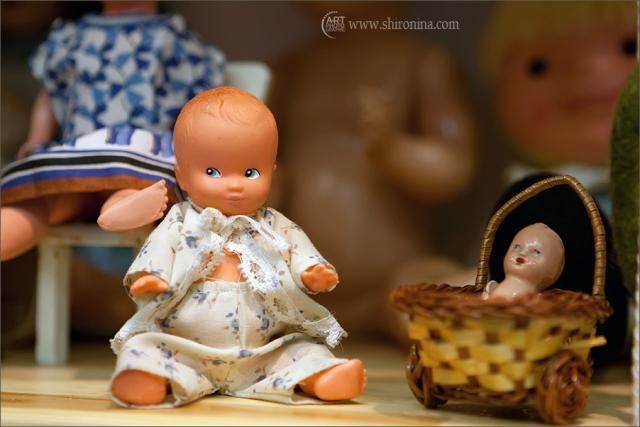|
|
International Doll Salon, Moscow, Russia
|
Uses, appearances and issues
Since ancient times, dolls have played a central role in magic and religious rituals, or used as representations of a deity. Dolls have also traditionally been toys for children. Dolls are also collected by adults, for their nostalgic value, beauty, historical importance or financial value. Antique dolls which were originally made as children's playthings have become collector's items. Nineteenth-century bisque dolls made by French manufacturers such as Bru and Jumeau may be worth almost $22,000 today.
Dolls have traditionally been made as crude, rudimentay playthings as well as with elaborate, artful design. They have been created as folk art in cultures around the globe, and in the 20th century, art dolls began to be seen as high art. Artist Hans Bellmer made surrealistic dolls that had interchangeable limbs in 1930s and 1940s Germany as opposition to the Nazi party's idolization of a perfect Aryan body. East Village artist Greer Lankton became famous in the 1980s for her theatrical window displays of drug addicted, anorexic and mutant dolls.
|
|









